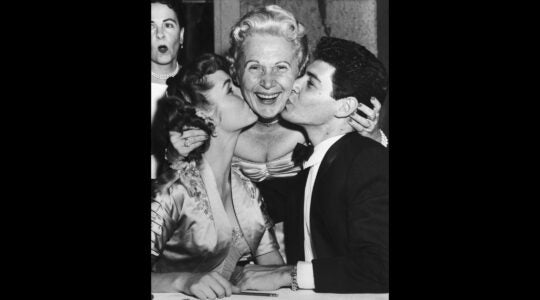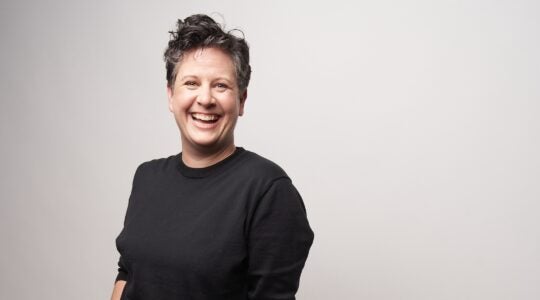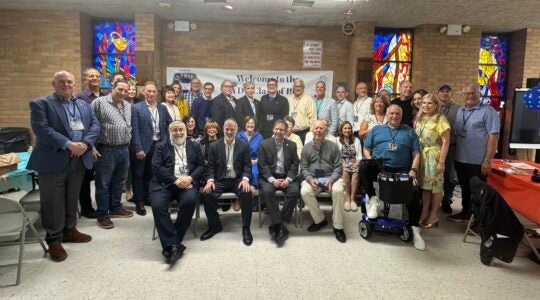‘Now you bring near to yourself Aaron, your brother and his sons with him… to minister to Me. You shall make vestments of sanctity for Aaron… for honor and splendor” [Exodus 28:1-2].
The two leaders during the 40 years in the desert were Moses the prophet and Aaron the kohen-priest. Moses’ main task was to bring the Word of God to instruct the Israelites on how to behave personally, and how to interact nationally with the world-at-large. Aaron’s main task was to maintain the religious ceremonies and celebrations in the Sanctuary, serving God.
From this perspective, there seems to have been a fairly clear line of demarcation between affairs of state and affairs of religion. Nonetheless, because it was God who was the Ultimate Architect of every realm of life as well as the Ultimate Source for these laws, there was a fairly transparent curtain between the two. After all, serving the God of compassionate righteousness and moral justice had to be the operating goals of both religion and state.
However, there is one crucial distinction: Although there must be fundamental and absolute principles of justice governing all affairs, it is very rare that two cases, even if similar to each other, will be adjudicated in the exact same way, and a great deal of latitude must ultimately be given to the individual rendering judgment. This is not the case in ritual law as expressed in the Sanctuary or synagogue, as I believe we may derive from the opening verses of Tetzaveh, which is dedicated to the priesthood and its functions.
For example, it is fascinating how Aaron is introduced together with his two sons, and is then presented with the special garments he must wear when serving in the Sanctuary. Unlike Moses and the later prophets, the priesthood (kehuna) is transmitted from father to son. Unless the priest is properly garbed in his special vestments, he may not enter the Temple precincts. The kohen-priest, you see, is entrusted with transmitting the outer form of Judaism, its external structure from generation to generation. It is the task of the charismatic prophet to remind us of the inner fire and internal spirit of our faith. External garb may be inherited, ritual performance may be taught, but the inspiration of the Holy Spirit is a Divine gift and an individual acquisition, totally independent of genealogy.
To be sure, there can be no meaningful religious experience without the sense of the Divine in the here and now, without the spirit of the prophet, but neither can religion be maintained without the continuity of the kohen-priest. And this continuity is equally crucial to the religious-ritual experience. From the earliest times of the pre-Socratic philosophers, humanity has desperately sought for constancy in a world of change, for continuity in a world of flux, for the ability to participate in that which was here before I was born and which will still be here after I die.
This, too, is an important aspect of the quest for God, and so we have the human need to maintain time-honored traditions, to repeat familial customs, to pray not from an ever-changing loose-leaf but rather from an ancient text which is wine-stained and tear-worn from feasts and fasts, going back centuries and even millennia.
After the Yom Kippur War, Prime Minister Golda Meir went to New York for a dinner in her honor sponsored by the Conference of Presidents of Major American Jewish Organizations. As the young president of a fledgling Center for Russian Jewry at the time, I was invited and seated two tables away from the Prime Minister. I was fascinated by the undisguised boredom on her face as she was forced to sit through the unending litany of inane and sycophantic speeches, the evident relief she exuded when at long last dinner was being served, and the ambidextrous grace she exhibited in balancing knife, fork and cigarette as she elegantly began to eat and smoke at the same time.
And then, to her obvious annoyance, an un-programmed “private” presentation of Rabbi Mordecai Kaplan’s interpretation of the Haggadah was handed to her just as she was taking her third bite. I knew of the Kaplan Haggadah, a sincere attempt to make the seder more relevant by substituting the Holocaust for the Egyptian enslavement and the establishment of the State of Israel for the desert experience, and it was presented to her with great pride and flourish.
She seemed a bit exasperated, put down her utensils, flipped through the Haggadah, and then, in true Israeli fashion, returned it, saying, “Thank you very much, but I’m not really interested.”
The presenters looked shocked. “But Madam Prime Minister, surely you’re not an Orthodox Jew and this Haggadah brings the story up to date, to the State of Israel.”
“No,” said Golda, “I’m not an Orthodox Jew and I’ll never be one. But I do make a Pesach Seder, especially for my grandchildren. And what is most important to me is that my granddaughter [say] at my Seder the same words that my grandmother said at her Seder.”
That is the eternity of Israel!
Rabbi Shlomo Riskin is chancellor of Ohr Torah Stone and chief rabbi of Efrat.
Candlelighting, Readings:
Shabbat Candles: 5:36 p.m.
Havdalah: 6:37 p.m.
Torah: Ex. 27:20–30:10;
Deuteronomy 25:17-19
Haftarah: I Samuel 15:1-34
The New York Jewish Week brings you the stories behind the headlines, keeping you connected to Jewish life in New York. Help sustain the reporting you trust by donating today.




